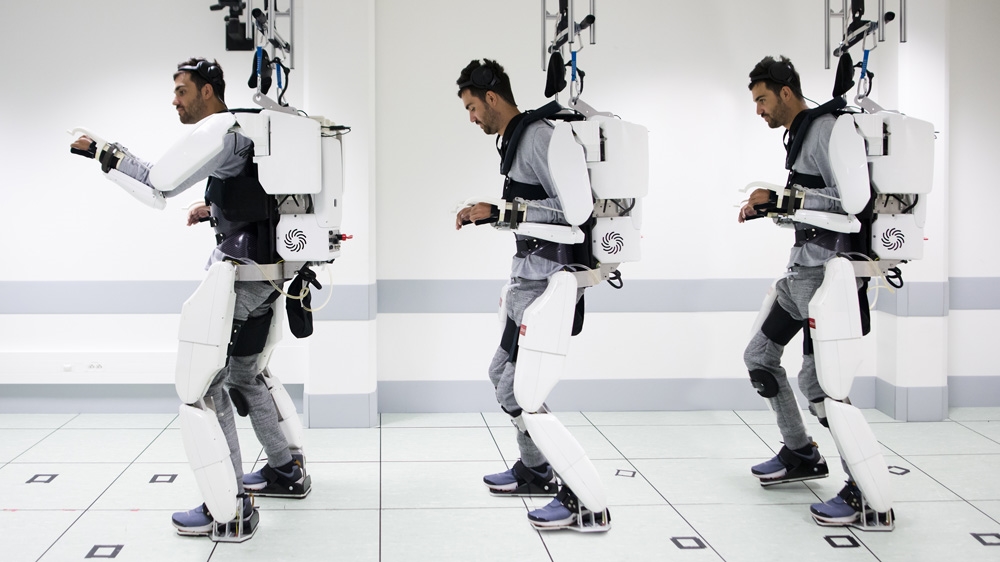
Mind-controlled exoskeleton allows paralysed man to walk
The exoskeleton suit is still a prototype, but it offers a glimpse into a future where people’s brains can help regain power of movement.
A French man who became quadriplegic after an accident four years ago has walked again with the aid of a revolutionary mind-controlled exoskeleton.
Researchers at the University of Grenoble in France developed the technology that translates brain waves into mechanical movement.
Keep reading
list of 4 itemsRare deep-sea squid filmed by scientists
Palestinian life under Israeli occupation: An illustrated guideThis article will be opened in a new browser window
Boeing’s jets turn 70: A timeline of highs, lows and turbulence
The 28-year-old man, identified only as Thibault, was paralysed after falling from a balcony in 2015.
Since then, his spinal cord had not been able to transmit signals from his brain to his limbs.

In 2017, researchers implanted two sensors in Thibault’s skull, in either side of the sensorimotor cortex, the part of the brain which controls movement.
The electrodes were able to detect Thibault’s brain signals and a computer algorithm processed them within 350 milliseconds. The algorithm translated the brain’s electrical impulses into the mechanical suit.
The result was Thibault moving, using the power of his mind.
Initially, he practiced on controlling a computer avatar, but he has since learned to move all four limbs of the exoskeleton suit.
“Throughout the 24 months of the study, the patient did various mental tasks to progressively increase the number of degrees of freedom,” researchers said in the study, which was published in the Lancet Neurology journal on Friday.
Scientists believe this is a groundbreaking discovery.
“What was performed was movements of an avatar on screen and an exoskeleton in all four limbs,” Tom Shakespeare, professor of disability research at the London School of Hygiene and Tropical Medicine, told Al Jazeera.
“And that’s new. It’s never been done from the brain controlling all four limbs. So that’s exciting for this domain of research,” Shakespeare added.

Robotic military assistance has been developing rapidly in recent years, but experts say harnessing brain power is still in its infancy.
“There are different technologies whether it’s wheelchair, whether it’s voice control … people with very high levels of tetraplegia are able to control electric wheelchairs by puffing and sucking with a device,” Shakespeare said.
“So, if this brain implant is really to transform that, and bring the promise of people by their thoughts controlling their mobility and their environment, it’s got a long way to go,” he added.